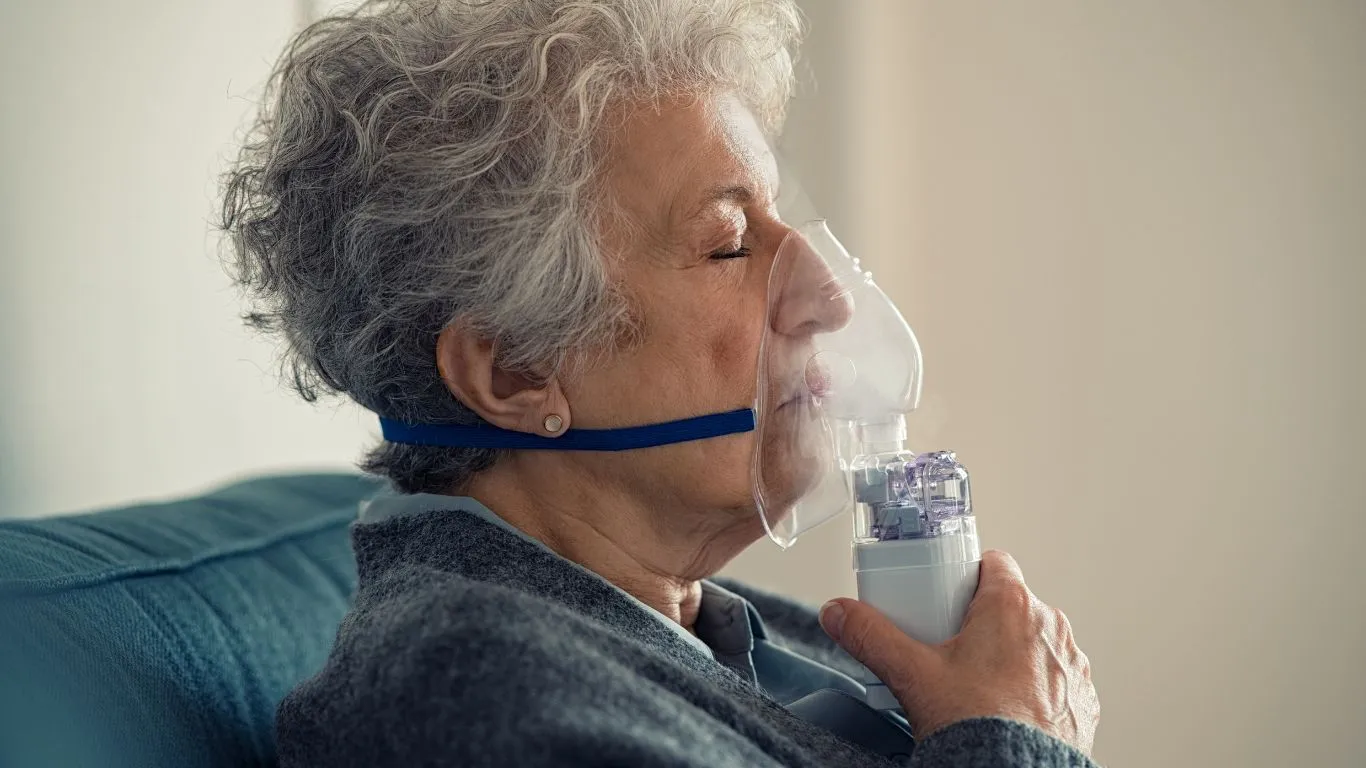Best Breathing Exercises for Mild Asthma: Boost Your Lung Health
As someone who has worked closely with individuals managing asthma, I understand how frustrating it can be to feel out of breath, especially during daily activities or exercise. But there’s good news – there are several simple breathing exercises that can help manage mild asthma symptoms and improve your lung function. Whether you’re looking to reduce the frequency of asthma attacks or just want to feel more in control of your breathing, these exercises can be a game-changer. In this article, we’ll explore the best breathing exercises for mild asthma that I’ve found most effective in my practice. These techniques can significantly improve your quality of life, all while being easy to incorporate into your daily routine.
The Power of Breathing Exercises for Asthma Control
Breathing exercises are a non-invasive way to help manage asthma symptoms. It may sound simple, but the truth is that they can help you regain control over your breath, which is key in reducing asthma flare-ups. Over the years, I’ve seen firsthand how these exercises can provide immediate relief for those experiencing shortness of breath. They can also help reduce stress and anxiety, which are common asthma triggers.

Why Breathing Exercises Work
Now, you might be wondering why breathing exercises work for asthma. Well, the key is to focus on how you breathe. Asthma often causes the airways to constrict, making it harder to breathe. But by practicing controlled breathing, you can help open up those airways and keep them clear. It’s kind of like telling your body to “chill out” and take a break from all the tightness in your chest.
Moreover, controlled breathing can train your lungs to work more efficiently, which means you won’t have to work as hard to get air in and out. This makes it easier to manage symptoms and even prevent asthma attacks from happening in the first place. What’s more, these techniques can be done anywhere, anytime—whether you’re at home, at work, or even during a workout.
Best Breathing Exercises for Mild Asthma
When it comes to asthma management, not all breathing exercises are created equal. Based on my experience as an asthma expert, there are a few specific techniques that I recommend for those dealing with mild asthma. These exercises can be incredibly beneficial and easy to implement on a daily basis.

1. Pursed Lip Breathing: A Simple, Yet Effective Technique
Pursed lip breathing is one of the simplest and most effective breathing exercises for mild asthma. I’ve personally found it to be a game-changer for many of my patients. It’s designed to help you exhale slowly, which allows air to flow more easily out of your lungs and prevents your airways from collapsing.
Here’s how you can do it:
- Relax your neck and shoulder muscles.
- Inhale slowly through your nose for about two counts.
- Then, purse your lips (like you’re going to blow out a candle) and exhale slowly for a count of four. Make sure your exhale is twice as long as your inhale.
Practicing pursed lip breathing can help you feel more relaxed and in control of your breath, even when asthma symptoms flare up. It’s an excellent way to help reduce air trapping and improve airflow in your lungs.
2. Diaphragmatic Breathing: Strengthening Your Breathing Muscles
Another great exercise for those with asthma is diaphragmatic breathing, also known as belly breathing. This technique focuses on using your diaphragm—the muscle at the base of your lungs—for more efficient breathing. By strengthening the diaphragm, you can reduce the effort required to breathe and improve oxygen intake.
Here’s how you can do diaphragmatic breathing:
- Lie down or sit in a comfortable position.
- Place one hand on your chest and the other on your belly.
- Take a deep breath in through your nose, ensuring that only your belly rises. Your chest should remain still.
- Exhale slowly through your mouth, letting your belly fall. Focus on feeling the air leave your lungs.
Diaphragmatic breathing may feel a little strange at first, but it’s one of the most effective ways to optimize lung function. It’s great for anyone looking to improve their respiratory capacity and gain better control over asthma symptoms.
3. Box Breathing: A Calming Technique for Asthma Control
If you struggle with asthma triggered by stress or anxiety, box breathing could be a fantastic option. This technique helps you regulate your breathing and promotes relaxation, which in turn can help reduce asthma flare-ups brought on by emotional triggers.
Here’s how to practice box breathing:
- Start by sitting or lying down in a comfortable position.
- Close your eyes and inhale slowly through your nose for a count of four.
- Hold your breath for a count of four.
- Exhale slowly through your mouth for a count of four.
- Hold your breath again for a count of four, and repeat.
Box breathing is a great way to calm your nervous system, which can have a direct positive impact on asthma control. Plus, it’s a perfect technique to use during times of stress or when you’re feeling overwhelmed by asthma symptoms.

Incorporating Breathing Exercises Into Your Daily Routine
By now, you’re probably starting to see how these breathing exercises can be a real game-changer when it comes to managing mild asthma. But I know what you’re thinking—it’s one thing to know what to do, and another to actually do it consistently. Trust me, I’ve been there. The key to success is making these exercises a part of your daily routine. I always tell my patients that even just five minutes a day can make a huge difference in how your lungs feel and how well you can manage your asthma.

Start Slow and Build Up
One of the most common mistakes I see is people diving in too quickly, thinking they need to do everything all at once. But when you’re starting with breathing exercises, it’s important to go easy on yourself. Start by choosing one or two exercises to focus on. Even 5 to 10 minutes per session is enough to begin with. As you get more comfortable, you can gradually extend the time and try out new techniques.
In my experience, it’s all about consistency. Once you get into the habit of doing these exercises regularly, you’ll notice how much easier it becomes to manage your asthma symptoms. It’s not about perfection; it’s about making progress. So, don’t stress if you miss a day here or there—just keep going!
Morning Breathing Routine
As someone who’s worked with patients on managing asthma, I’ve found that the morning is a fantastic time to do your breathing exercises. Starting your day with some deep, controlled breaths can help you set the tone for the rest of the day. It can help you feel more energized, and, most importantly, it opens up your airways, making it easier to breathe as you go about your morning routine.
Here’s what I recommend for a morning routine:
- Start with a few minutes of diaphragmatic breathing to get your lungs moving.
- Follow up with some box breathing to help calm your mind and reduce any stress you might be feeling about the day ahead.
- Finish with a session of pursed lip breathing to really get your airways open and flowing.
It’s a simple, effective way to jump-start your day and ensure that you’re not starting off with any tightness in your chest.
Advanced Breathing Techniques for Long-Term Asthma Management
If you’re feeling comfortable with the basic exercises, it may be time to explore some more advanced techniques that can really take your asthma management to the next level. These methods require a bit more focus, but they’re fantastic for long-term control, especially when combined with the basics we discussed earlier.

4. Buteyko Breathing: A Technique for Reducing Over-breathing
Buteyko breathing is a technique that focuses on reducing hyperventilation (over-breathing), which is common among people with asthma. The idea behind this method is that by controlling your breath and keeping your breathing rate slower and more controlled, you can help reduce asthma symptoms and improve overall lung function.
Here’s how you can practice Buteyko breathing:
- Start by sitting comfortably in a quiet place.
- Take a small, gentle breath in through your nose.
- Then, breathe out slowly and quietly, through your nose again. You should feel like you’re slightly breath-holding after each exhale, but not to the point of discomfort.
- Repeat for 5-10 minutes, ensuring your breathing stays slow and calm throughout.
Buteyko breathing is especially helpful if you’re prone to over-breathing, which can worsen asthma. By teaching your body to breathe more slowly and efficiently, you can help your airways remain open and reduce the likelihood of flare-ups.
5. The Papworth Method: Combining Breathing with Relaxation
If you’re looking for a technique that combines breathing with relaxation, the Papworth method might be something you want to try. This method uses a combination of slow, controlled breathing techniques along with mindfulness and relaxation practices to help manage asthma symptoms.
Here’s what you do:
- Sit or lie down in a comfortable position.
- Focus on your breathing, taking slow, deep breaths in through your nose.
- Exhale gently through your nose, making sure not to force the air out. You should feel calm and relaxed during the exhalation.
- As you breathe, try to focus on relaxing your entire body, starting from your head and working your way down to your toes.
The Papworth method is great for reducing anxiety and improving lung function. Over time, the combination of mindful breathing and deep relaxation can help you breathe more easily and manage your asthma symptoms effectively.
Additional Tips for Maximizing the Effectiveness of Breathing Exercises
To get the most out of your breathing exercises, I’ve put together a few tips based on my experience working with asthma patients. These small changes can make a big difference in how your body responds to the exercises and how much relief you get.
Stay Consistent
The most important tip I can give you is to stay consistent. I can’t tell you how many times I’ve heard patients tell me that they stopped doing their breathing exercises after a week because they didn’t see instant results. But asthma management is a long-term game. The more consistently you practice, the more you’ll notice the benefits in your everyday life.
Focus on Your Posture
Your posture plays a huge role in how well you can breathe. When you’re slouched or hunched over, your lungs have less room to expand, which can make breathing exercises less effective. I always encourage my patients to practice good posture, especially during breathing exercises. Sit or stand up straight, relax your shoulders, and make sure your chest is open.

How to Track Your Progress and Adjust Your Breathing Routine
As you continue with your breathing exercises, it’s important to track your progress. Just like with any form of exercise or therapy, you won’t see instant results, but over time, the benefits will become more noticeable. From my experience, many people with asthma feel discouraged when they don’t see immediate relief, but it’s crucial to keep at it and monitor how your breathing improves. Tracking your progress is key to seeing how far you’ve come and knowing when it’s time to adjust your routine for even better results.

Keep a Breathing Journal
One of the best ways to track your progress is by keeping a breathing journal. It may sound old-fashioned, but it really works. This doesn’t have to be anything fancy; a simple notebook or a note on your phone will do. The idea is to record the exercises you did, how long you did them for, and how you felt afterward.
Here’s a quick rundown of what to note down in your journal:
- The date and time you practiced your breathing exercises.
- Which exercises you focused on (e.g., pursed lip breathing, diaphragmatic breathing, etc.).
- Your overall experience – Did you feel more relaxed? Did your breathing feel easier afterward? Any areas that felt more difficult?
- How your asthma symptoms have been (more frequent attacks, less chest tightness, etc.).
Journaling gives you a clear picture of how your asthma is being managed and allows you to see trends over time. You might notice, for example, that your asthma attacks are less frequent on days when you’ve practiced for a longer period or when you’ve combined certain exercises. This feedback helps you fine-tune your routine.
Listen to Your Body
It’s essential to listen to your body as you continue with your breathing exercises. If you’re feeling lightheaded, dizzy, or uncomfortable during any of the exercises, it’s important to stop and take a break. Breathing exercises should feel like a way to relax and regain control—not something that causes additional stress. I’ve had patients tell me they felt worse after certain exercises, and after some adjustment, we were able to find a routine that felt better for them. Your comfort and safety come first.
When to Seek Professional Help
While breathing exercises are a great way to manage mild asthma, they aren’t a replacement for medical treatment. I always advise my patients to consult their doctor before starting a new breathing regimen, especially if they have other underlying health conditions. Asthma can be unpredictable, and if you ever experience sudden or severe symptoms, like wheezing, chest tightness, or difficulty breathing, it’s crucial to seek immediate medical attention.

If you’ve been doing the exercises and still aren’t feeling much improvement or if your symptoms start getting worse, it’s time to check in with your healthcare provider. They might adjust your asthma treatment plan or recommend more specialized techniques to help you breathe easier.
In some cases, your doctor may refer you to a respiratory therapist or an asthma educator who can help you refine your techniques and ensure you’re using the correct methods. Don’t hesitate to reach out to your doctor if you feel like the exercises aren’t giving you the relief you hoped for. Asthma management is a team effort, and they are there to help you succeed!
Additional Lifestyle Tips for Managing Asthma
In addition to breathing exercises, there are a few other lifestyle changes that can make a huge difference when it comes to asthma management. I always tell my patients that breathing exercises alone aren’t a “cure-all,” but when combined with the right lifestyle changes, they can work wonders for asthma control.
Avoiding Triggers
One of the most important things you can do to manage asthma is to identify and avoid your triggers. This might include things like allergens (dust, pollen, pet dander), air pollution, smoke, or even certain foods. Pay attention to your environment and try to make adjustments that will reduce your exposure to these triggers. Sometimes, simple changes like using a humidifier, changing air filters regularly, or avoiding outdoor activities during high pollen seasons can make a huge difference.
Staying Active
Exercise is another key element of asthma management. While it might seem counterintuitive to work out when you have asthma, staying active can actually improve your lung function and reduce symptoms over time. Just be sure to warm up slowly and choose exercises that won’t overexert you. Walking, swimming, or cycling are great options. If you’re concerned about exercising with asthma, I always suggest talking to your doctor or a respiratory therapist about safe exercise routines.
Diet and Hydration
Believe it or not, your diet can also have an impact on asthma. Some studies suggest that a diet rich in fruits, vegetables, and omega-3 fatty acids can help reduce inflammation in the body, which can in turn reduce asthma symptoms. Staying hydrated is also important, as proper hydration helps keep your airways moist and less prone to irritation. So, drink plenty of water throughout the day!
References
For more information on managing asthma and the role of breathing exercises, you can visit trusted sources such as Healthline and Mayo Clinic. These organizations provide evidence-based recommendations and resources for people living with asthma.
Disclaimer
The information provided in this article is for general informational purposes only. It is not intended as a substitute for professional medical advice, diagnosis, or treatment. Always seek the advice of your physician or other qualified health provider with any questions you may have regarding a medical condition. Never disregard professional medical advice or delay in seeking it because of something you have read in this article.

Bianca Nala is a compassionate Nurse Practitioner with a strong background in primary and respiratory care. As a health writer for Healthusias.com, she combines her clinical expertise with a talent for clear, relatable storytelling to help readers better understand their health. Bianca focuses on topics like asthma, COPD, chronic cough, and overall lung health, aiming to simplify complex medical topics without losing accuracy. Whether she’s treating patients or writing articles, Bianca is driven by a single goal: making quality healthcare knowledge accessible to everyone.






